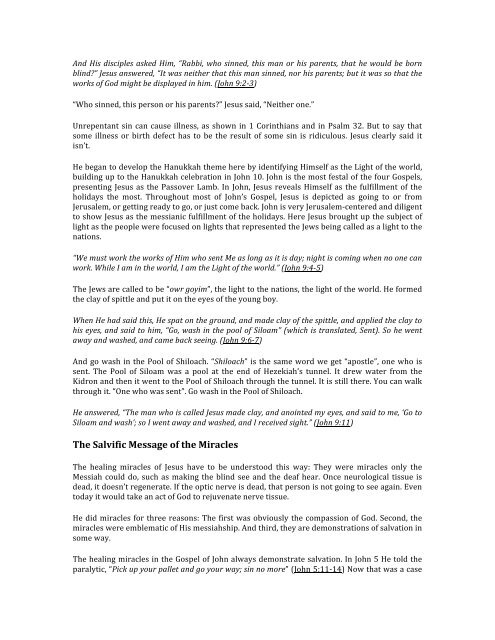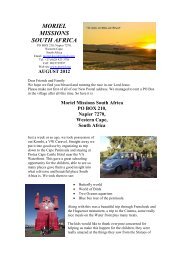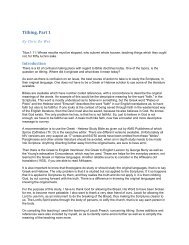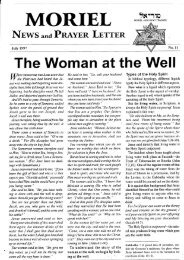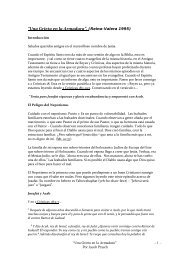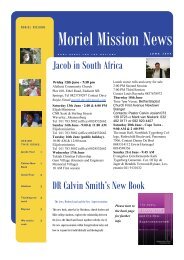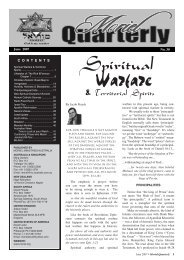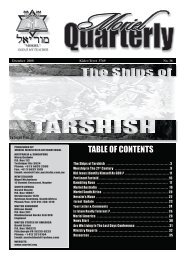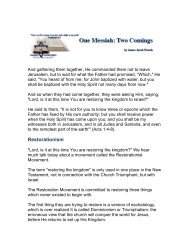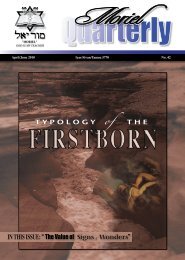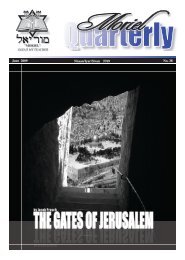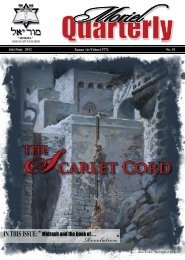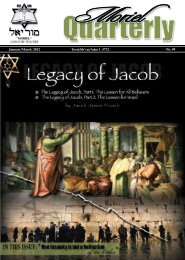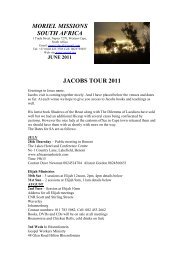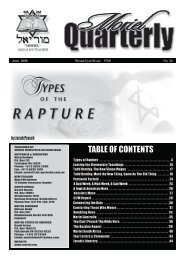Introduction The Traditional Aspect - Moriel Ministries
Introduction The Traditional Aspect - Moriel Ministries
Introduction The Traditional Aspect - Moriel Ministries
You also want an ePaper? Increase the reach of your titles
YUMPU automatically turns print PDFs into web optimized ePapers that Google loves.
And His disciples asked Him, “Rabbi, who sinned, this man or his parents, that he would be born blind?” Jesus answered, “It was neither that this man sinned, nor his parents; but it was so that the works of God might be displayed in him. (John 9:2-‐3) “Who sinned, this person or his parents?” Jesus said, “Neither one.” Unrepentant sin can cause illness, as shown in 1 Corinthians and in Psalm 32. But to say that some illness or birth defect has to be the result of some sin is ridiculous. Jesus clearly said it isn’t. He began to develop the Hanukkah theme here by identifying Himself as the Light of the world, building up to the Hanukkah celebration in John 10. John is the most festal of the four Gospels, presenting Jesus as the Passover Lamb. In John, Jesus reveals Himself as the fulfillment of the holidays the most. Throughout most of John’s Gospel, Jesus is depicted as going to or from Jerusalem, or getting ready to go, or just come back. John is very Jerusalem-‐centered and diligent to show Jesus as the messianic fulfillment of the holidays. Here Jesus brought up the subject of light as the people were focused on lights that represented the Jews being called as a light to the nations. “We must work the works of Him who sent Me as long as it is day; night is coming when no one can work. While I am in the world, I am the Light of the world.” (John 9:4-‐5) <strong>The</strong> Jews are called to be “owr goyim”, the light to the nations, the light of the world. He formed the clay of spittle and put it on the eyes of the young boy. When He had said this, He spat on the ground, and made clay of the spittle, and applied the clay to his eyes, and said to him, “Go, wash in the pool of Siloam” (which is translated, Sent). So he went away and washed, and came back seeing. (John 9:6-‐7) And go wash in the Pool of Shiloach. “Shiloach” is the same word we get “apostle”, one who is sent. <strong>The</strong> Pool of Siloam was a pool at the end of Hezekiah’s tunnel. It drew water from the Kidron and then it went to the Pool of Shiloach through the tunnel. It is still there. You can walk through it. “One who was sent”. Go wash in the Pool of Shiloach. He answered, “<strong>The</strong> man who is called Jesus made clay, and anointed my eyes, and said to me, ‘Go to Siloam and wash’; so I went away and washed, and I received sight.” (John 9:11) <strong>The</strong> Salvific Message of the Miracles <strong>The</strong> healing miracles of Jesus have to be understood this way: <strong>The</strong>y were miracles only the Messiah could do, such as making the blind see and the deaf hear. Once neurological tissue is dead, it doesn’t regenerate. If the optic nerve is dead, that person is not going to see again. Even today it would take an act of God to rejuvenate nerve tissue. He did miracles for three reasons: <strong>The</strong> first was obviously the compassion of God. Second, the miracles were emblematic of His messiahship. And third, they are demonstrations of salvation in some way. <strong>The</strong> healing miracles in the Gospel of John always demonstrate salvation. In John 5 He told the paralytic, “Pick up your pallet and go your way; sin no more” (John 5:11-‐14) Now that was a case


